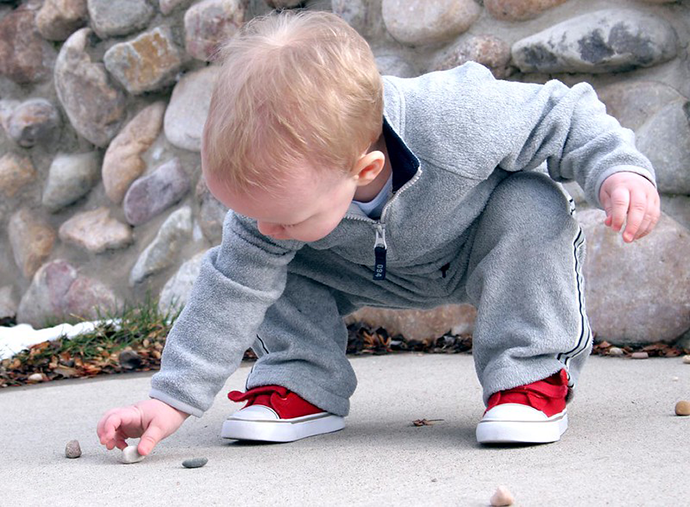Happy Wednesday afternoon, here in NY at least. 🙂 This email includes probably my final summer project: science subscription kits. Turns out that there’s lots of them beyond what I know best: Bitsbox, which is about coding games for kids. This email also has geology and natural science apps, how to set reasonable boundaries for kids and tech, and fun Scratch projects to be found at the Raspberry Pi website.
Hope you find this information interesting. Do let me know if you have questions or requests. Thank you for reading today!
Subscribe to STEM/STEAM
The last summer STEM project I want to suggest has to do with science subscription services. I’ve seen a lot of print and TV ads for KiwiCo, for example. And I can personally vouch for Bitsbox as a terrific (and fun) game coding service geared towards kids. But it turns out that there’s lots of these science kit services out there. Their pitch is simple: instead of one big gift, why not a monthly or every two month science project that shows up in the mail? Of course, the risk is that you might not be interested in what shows up in the mail any given month. But when kids and projects connect, fun science and learning about science is possible.
Bitsbox
https://bitsbox.com/
KiwiCo
https://www.kiwico.com/
Little Passports
https://www.littlepassports.com/
Crunch Labs
https://www.crunchlabs.com/
Green Kid Crafts
https://www.greenkidcrafts.com/
The 14 Best Subscription Boxes for Kids
https://www.wired.com/gallery/best-subscription-boxes-for-kids/
What’s that Rock?
As an adult, I still collect rocks and have a few on my desk. Mostly they represent places that I want to remember and, in some cases, special characteristics like extremely dense heavy rocks or smooth ones. To get your kids interested in geology, or if you collect like I do, there’s a few interesting apps worth a look. Rockd appears to have a lot of features in their free version. Plus the app works on Android and Apple devices. Rockd also uses data available on the MacroStat website, if you’re looking for a way to find places with interesting rocks.
I did find another interesting option: The premium version of the Gaia GPS app/service appears to include geologic information in addition to hiking trails. Their premium version is $59.99 as of June 2024, which may or may not be a dealbreaker. There’s a video below showing how one person uses Gaia GPS premium to find places to looks for interesting rocks.
For apps, if you plan to use a phone or tablet, and privacy is important to you, be sure to look at what data the apps collect.
And there’s also the iNaturalist community that is citizen science: they encourage people to report their finds and it’s easy to look up what others have found in the way of plants, birds, and insects.
Rockd
https://rockd.org/
MacroStrat
https://macrostrat.org/
BGS (British Geologic Society)
https://www.bgs.ac.uk/map-viewers/bgs-geology-viewer/
https://www.bgs.ac.uk/map-viewers/geoindex-onshore/
18 Best Mobile Apps for the Tech-Savvy Geologist
https://www.dynamicsgex.com.au/learning_hub/18-mobile-apps-for-the-tech-savvy-geologist
How to Actually Find Your Own Rockhounding Location
https://www.youtube.com/embed/bBB4vvMj3Co
https://www.gaiagps.com/ (Gaia GPS)
iNaturalist (Plants, Birds, Insects)
https://www.inaturalist.org/
PlantNet
https://plantnet.org/en/
Parent/Teacher: The Healthy Boundaries Conversation
Here’s a great article we published awhile ago:
‘When we consider how we speak to children about boundaries, we are constantly trying to teach them about dangers that exist in the wider world. “Don’t talk to strangers” or “Look both ways before crossing the street” are usually some of the first lessons children hear about developing healthy boundaries. By the time children reach Middle School these conversations about boundaries transition to conversations about the dangers of smoking or alcohol. However, one of the most important conversations that isn’t being had in classrooms and across kitchen tables is the conversation about boundaries with technology.
The conversations parents have with young children about strangers tends to come from children’s overly trusting nature and the unfortunate fact that not everyone deserves their trust. However when it comes to technology, many parents and society in general have lost this ability to take account of what is considered dangerous and what is considered safe. In a strange turn of events, technology companies have snake-charmed many into believing that devices, apps, and games are safe and appropriate for children as young as Kindergarten age when the research very much says the opposite. Moreover, apps like TikTok and services like YouTube Kids have been introduced as safe alternatives while at the same time onboarding children into services that have detrimental effects on privacy, safety, and mental health.’
The Healthy Boundaries Conversation
https://kidscodecs.com/healthy-boundaries-computing/
Coding Projects and Games
The Raspberry Pi foundation has a fun website with lots of Scratch 3 games. Code instructions are included, along with finished examples. You can find projects based on topics, hardware, software, and levels.
Raspberry Pi Projects
https://projects.raspberrypi.org/en/projects
This Week
Our Sunday issue this week has fun often offbeat links, for example, how sleep and social media affects the brains of teenagers, cow poop as a possible source of clean hydrogen gas, using dandelions to replace rubber, possible bird flu vaccines, time keeping and the moon, and more.


